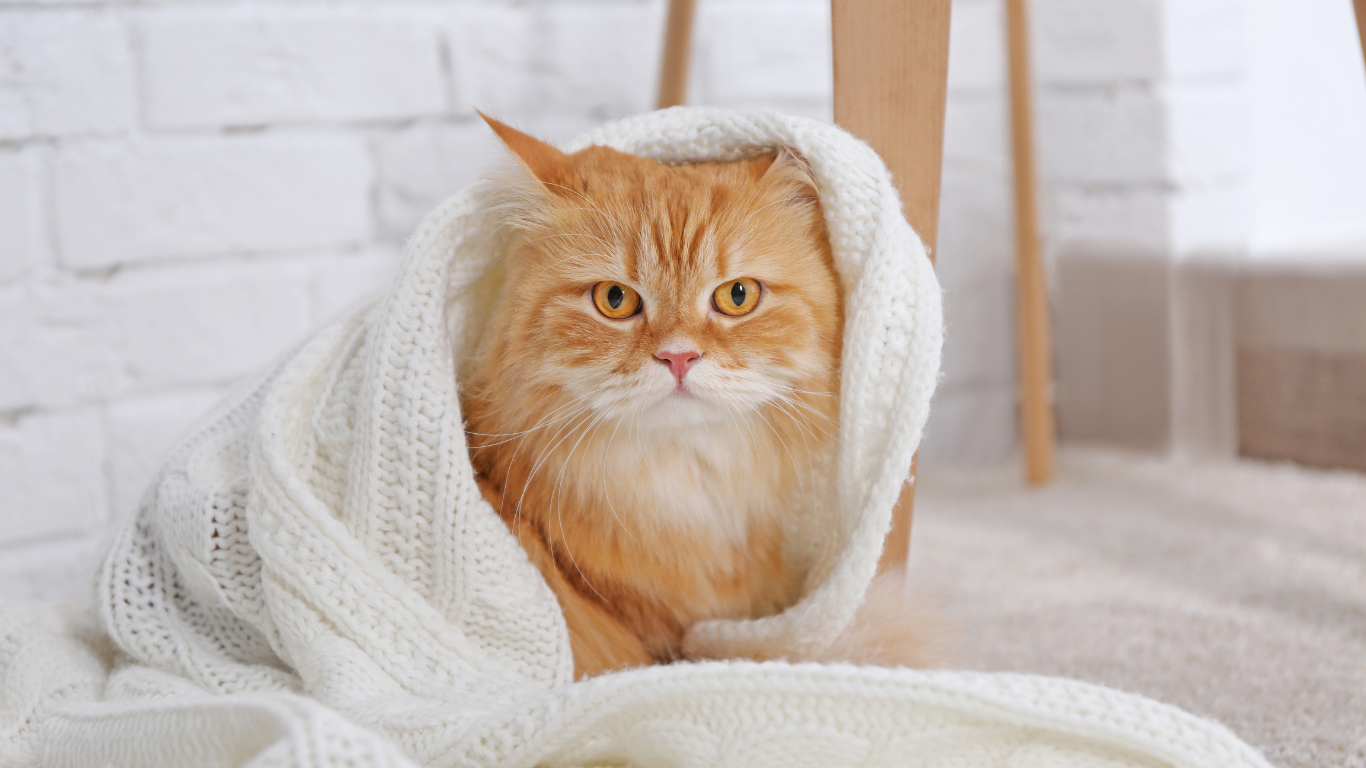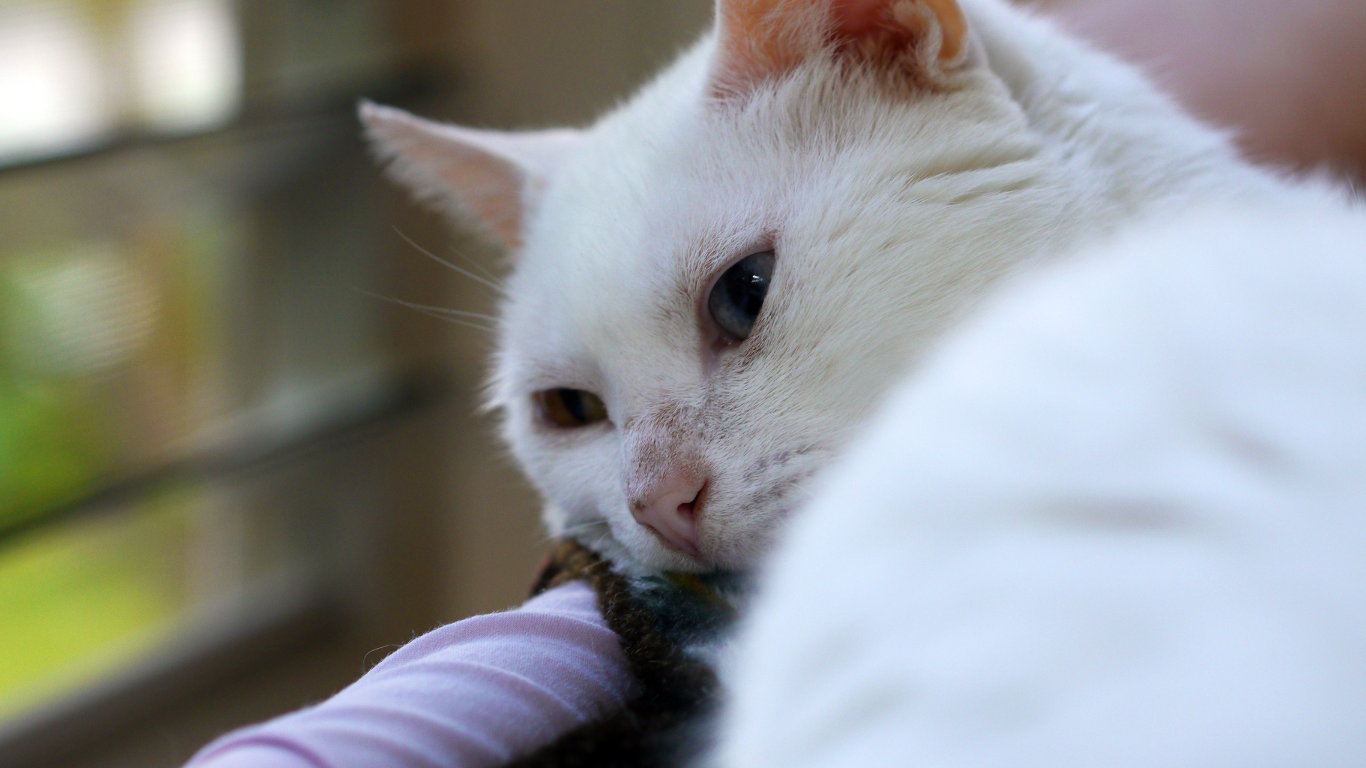Cat flu is a viral disease that should not be underestimated and primarily affects young cats, very old or weak animals. In general, any cat can be affected by the disease. Since cat cold can be very severe, it is important to recognize the symptoms in good time and take countermeasures. In this article you will find out how cat cold differs from a normal cold and how the disease can be properly treated.
Cat flu: Everything you need to know
The name sounds harmless, but there is much more to cat cold than just a harmless illness. But what exactly is cat cold ? It is a viral infection that can even be life-threatening for affected animals. The first symptoms begin just a few hours after infection. It is all the more important that you correctly assess these symptoms and start the right treatment in a timely manner.
Cat cold is caused by viruses or bacteria
The disease can be triggered by different pathogens. The so-called Feline Herpesvirus is primarily responsible , but caliciviruses can also be the cause of the disease. Often several pathogens appear at the same time and reinforce each other. Depending on the pathogen, this can cause diffuse symptoms of cat cold to occur. This is why it is also referred to as the so-called cat cold complex.
Where are the most common sources of infection?
The infection itself can occur through various routes. Most of the time, one sick cat infects another. Transmission can occur via the mucous membranes, but also via the feces . It is even enough for the pathogens to be transmitted if a sick and a healthy cat share a bowl. Even after recovering from an illness, the infected cat carries the virus with it throughout its life and can infect other animals with it. Most of the time, only outdoor animals get infected with cat flu - they are outside in contact with other animals, fight with each other or move across the fields together. The disease is then particularly frequently transmitted through droplet infection.
Even indoor cats can become infected with the pathogen. If the owners bring viruses and bacteria into the apartment from outside that stick to shoes and clothing, transmission is also possible.
Can cat cold be transmitted to humans?
As a rule, this cat disease poses no danger to humans. However, if certain pathogens, such as the Bordetella bronchiseptica pathogen, have caused cat cold, transmission to humans is possible in rare cases. However, only age- and immunocompromised people or small children who are very intensively involved with the animal and cuddle a lot with the sick cat are affected.
The symptoms in humans are expressed by a high fever over 39 degrees, severe cough and sometimes breathing problems. If the same symptoms occur in quick succession in humans and animals, infection can be assumed. As a rule, cat cold is not transmitted to humans.
How dangerous is cat cold?
If left untreated, cat cold can become chronic or even lead to the death of the animal. But even if treatment is initiated in a timely manner, the infection is particularly dangerous for older and weak or very young animals. Many young animals that become ill in the first few weeks of life do not survive. Older animals often experience recurrent conjunctivitis despite treatment. If further infections occur, the immune system is further weakened. In particular, wild animals without owners who do not receive medical treatment suffer from severe illnesses. However, all other furry friends have a good chance of healing. Fortunately, the mortality rate for cat flu is very low.
Cat cold symptoms: This is how the viral disease manifests itself
At first, the symptoms of cat cold are similar to those of a normal cold. The cat coughs and sneezes and secretes a secretion. However, the symptoms worsen over time.
You can recognize cat flu by these characteristics:
- Severe coughing and sneezing
- Secretion in nose and eyes
- Increased salivation
- Ulcers in the mouth
- Loss of appetite
- weight loss
- fatigue
- Fever
- apathy
In the early stages of cat cold, affected animals usually look noticeably sick. Cat cold first appears in the eyes, which produce secretions and are inflamed. The cat's nose runs and ulcers sometimes form on the face and mucous membranes, which visibly grow outwards. The cat has a runny nose and is wheezing: At this stage the disease has already noticeably progressed. Depending on the causative pathogen, the symptoms can spread to the entire body, affecting the cat's skin and even its bones.
How can I tell a cat cold from a simple cold?
Cats can also catch a simple cold . In contrast to viral diseases, this is usually harmless in healthy animals and disappears completely after a few days. The symptoms are initially similar. The cat has a runny nose and watery eyes, it sneezes or even coughs and a secretion runs from its nose and eyes. The little velvet paw doesn't feel well, is less active than usual, withdraws or demands a lot of petting. This condition can last a few days. If things don't get better, you should go to the vet together as soon as possible to rule out a serious illness.
However, if a fever occurs, then there is no longer any waiting and you should see a veterinarian straight away . You will notice an increased temperature in your cat's nose and ears. These are usually cool to lukewarm. If the temperature in these areas has increased noticeably, this is a clear sign of fever.
Cat cold treatment: This is how you can help
As you can see from the information so far, the disease is not something to be trifled with. If left untreated, it can even be fatal for the animal. Fortunately, it doesn't have to come to that if you recognize the symptoms in time and have the cat cold treated. But what to do if you have a cat cold? Your first point of contact is the veterinarian. In the practice, your furry friend will be thoroughly examined. You will definitely have to answer a lot of questions and you should definitely have your vaccination certificate with you. Your vet will then take a swab from your nose or eye and have it examined in the laboratory. There it will be determined whether your furry friend has been infected with the pathogen or perhaps just has a harmless cold.
What helps against cat colds?
Veterinarians usually prescribe an antibiotic. The drugs of choice are cat cold medications with the active ingredients amoxicillin or tetracycline. Since several pathogens often come together, a broad-spectrum antibiotic such as chloramphenicol is best. However, it is important to weigh up the risks and side effects that particularly affect kittens. The cat cold medication is administered either as a tablet or in the form of eye drops.
In order for the little fur nose to regain its strength, additional medication is often prescribed to support it. Immunoglobulins are antibodies that help fight viruses. Feline interferon is also used very successfully in treatment. This is an immune-stimulating protein.
How long does it take for cat cold to go away?
If the diagnosis is made in a timely manner, the disease is very curable. If the medication works quickly and no complications arise, your furry friend will be symptom-free again in about three weeks.
Remember: cat flu is highly contagious . If an animal is sick and other cats live in the household, they should be isolated immediately. It is best to give the sick cat its own food and drinking bowl and you should always wash your hands and disinfect yourself thoroughly after contact with the sick animal.
Cat cold home remedies: Can you treat cat cold yourself?
To be clear: A sick animal always belongs in the hands of experienced veterinarians. The disease cannot be cured without appropriate medication . Affected four-legged friends cannot avoid taking medication regularly. However, you can support the healing process with home remedies .
-
Nose and eye care
The sticky mucous membranes can be very uncomfortable for the animal. It is best to regularly remove secretions from your little fur nose with a damp, lukewarm cloth. If there is severe incrustation, using petroleum jelly sparingly can help. -
Inhale
There are special inhaler aids for cats. This clears the airways again and alleviates the symptoms. -
Heat and puree the food
Affected cats often have problems smelling their food and therefore do not touch it. If you warm the wet food a little, the flavors will develop better - perhaps this will stimulate your cat's appetite. If the animal has difficulty swallowing, make it easier for it to eat by pureeing the food. -
Add lysine
The protein building block lysine works in the animal's body against the main pathogen - the feline herpes virus. Lysine can simply be added to the food.
The right cat food for cat colds
The disease places a heavy burden on your cat's organism. Therefore, you should consciously choose cat food that does not contain any harmful ingredients such as grains. Dogs'n Tiger guarantees a very high meat content and 100% food quality of all raw materials - both in dry food and wet food . This makes the food easy to digest, which of course also benefits healthy cats. Artificial flavors and ingredients, on the other hand, are not contained in animal feed at all. Various herbs support digestion. You're sure to find your furry friend's favorite type of food in the selection.
How can I prevent infection with cat flu?
The best prevention is a cat flu vaccination, which is an integral part of small animal prophylaxis. The basic immunization should take place between the ages of 8 and 12 weeks. A year later you will come back to the practice for a booster vaccination. The cat flu vaccine should then be refreshed every two years, especially if the cat is an outdoor animal.
A vaccination is therefore the best protection against the disease. However, it cannot be 100% ruled out that an animal will become infected with the virus despite vaccination. This case often occurs when the immunization has not yet been completed or the booster has not been carried out regularly. However, the infection is significantly milder in a vaccinated cat than in cats that have no vaccination protection whatsoever.
Other preventive measures include:
- Hygiene in the household
- Avoid stays in animal boarding houses
- Avoid contact with frequently changing caregivers
- Quality cat food
Conclusion: What to do if you have a cat cold?
Cat cold is a serious but curable disease in cats. It first becomes noticeable through sticky eyes and noses; Later, other symptoms such as fatigue, apathy or fever appear. Veterinarians prescribe antibiotics and immune globules to support affected animals. You cannot treat the disease yourself, but you can support the healing process with home remedies. A special vaccine that is given to small kittens when they are just a few weeks old and needs to be refreshed regularly helps prevent it. Pay attention to a healthy and balanced diet - this is the best prevention against illness. After all, a good immune system can stand up to some viruses!










